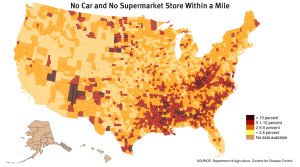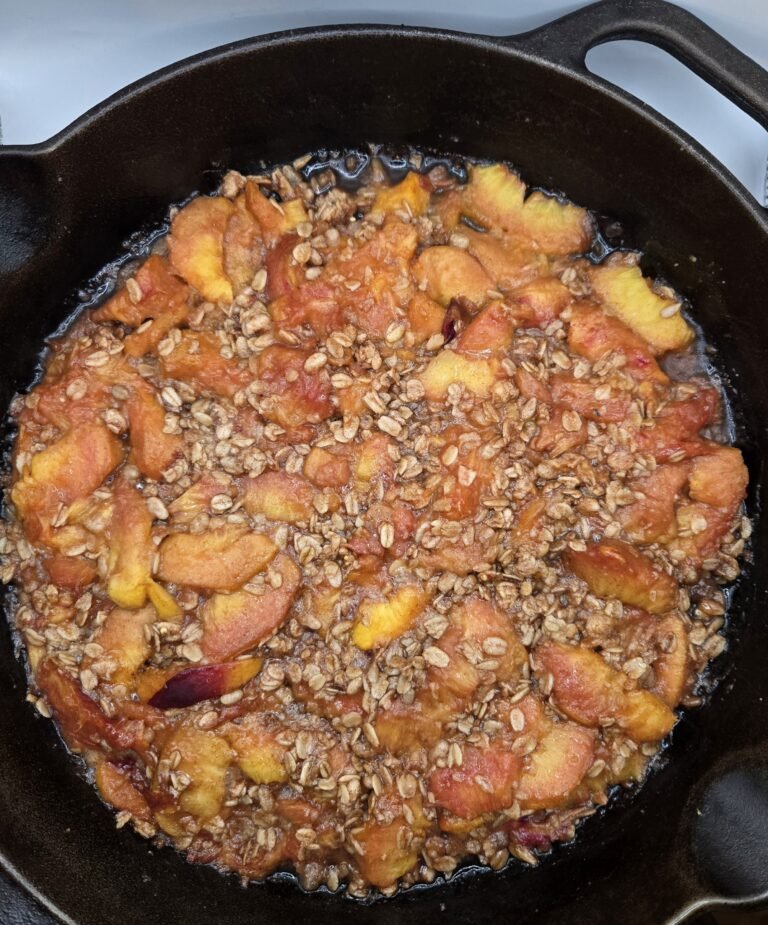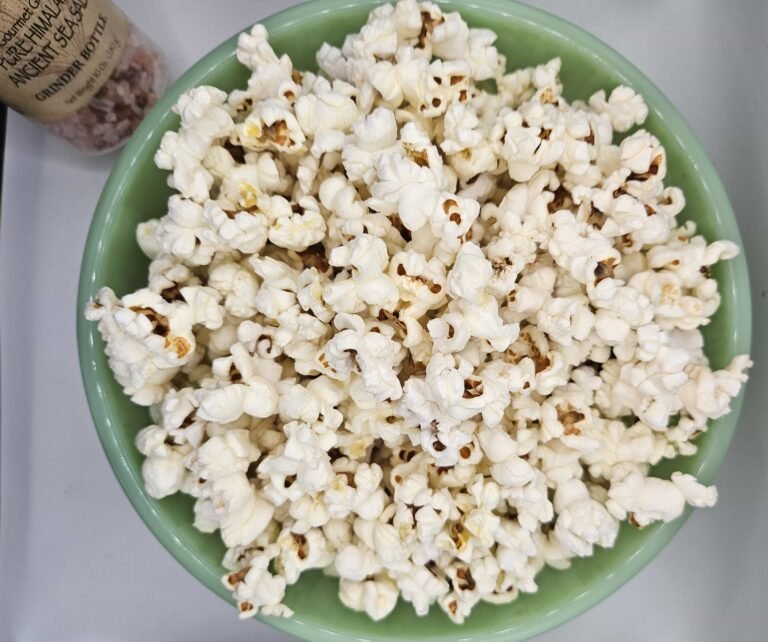
A locavore is someone who advocates for and eats locally grown foods, which is usually defined as within 100 miles but there aren’t any hard rules. Congress defines locally and regionally produced foods much broader — as those marketed within 400 miles of the product’s origin, or within the state where it was produced.[1] Locavores have access to and can afford these healthier foods.
When most of the money Americans spend on their weekly food bills leaves the region because people do not make an effort to buy local, they become disconnected from local farms. The farms and local grocers go under and are built over, and farm markets move further out of the area. What results are pockets where there is no access to local food and these areas are called “food deserts.” Food deserts can be urban neighborhoods or rural towns where people no longer have access to fresh produce because they do not have farm markets or healthy grocery stores. Sometimes people are left to buy their family’s food at convenience stores, and the type of food they have access to leads to obesity and all of the related diseases. People in these areas cannot afford or do not have to transportation to access healthy food.
There are many initiatives to get healthy food into impoverished areas. For example, some cities have started inner city food buses. The 2008 farm bill (Section 6015) authorized a program that made loan guarantees to individuals and businesses to provide locally and regionally produced foods. Providing food to underserved rural and urban areas were given priority.[2] If you have access to fresh, local produce and didn’t realize how lucky you are, here are my top ten of the probably 100 reasons to celebrate your food abundance and make an effort to buy local:
- Your food tastes great because it ripened on the plant instead of in transit.
- Food is fresher since there is less time between when it was picked or prepared and when you can buy it.
- You’re supporting and getting better acquainted with your local community.
- There’s a wider variety of each type of produce because only certain species of produce can withstand the demands of long-distance transport.
- The sooner fresh produce is consumed after harvesting, the more nutrient dense it is.
- It’s ecologically kinder to reduce the food miles and reduce gas emission and fossil fuels.
- You learn what foods grow in your region and become more conscientious of eating seasonally and may even learn to preserve and store your own food.
- You start to expose yourself to new foods and replace processed food with real food from your neighboring farms. Farmers will tell you how to prepare the foods that they sell.
- Local farmers tend to minimize pesticides and fertilizers and use less antibiotics and hormones on their animals in addition to letting them graze on pasture.
- Local farms create local jobs and sustain the small farm industry by creating a market for new farmers which also helps the future of our country’s agriculture production.
[1] “An Overview of USDA Rural Development Programs,” by Tadlock Cowan, Feb. 18, 2014.
[2] Ibid, page 24.




